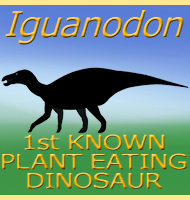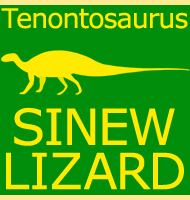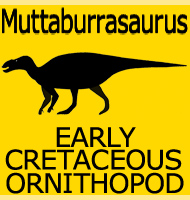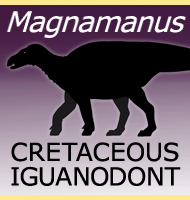


Planicoxa
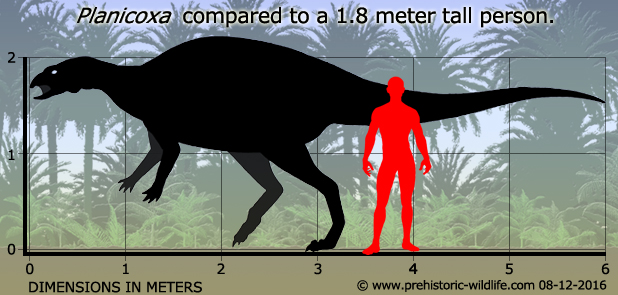
Name: Planicoxa.
Phonetic: Plan-e-coks-ah.
Named By: Tony DiCroce & Kenneth
Carpenter - 2001.
Classification: Chordata, Reptilia, Dinosauria,
Ornithischia, Ornithopoda, Iguanodontia, Ankylopollexia.
Species: P. venenica (type).
Diet: Herbivore.
Size: Estimated about 6 meters long.
Known locations: USA, South Dakota, Utah -
Cedar Mountain Formation, Poison Strip Sandstone.
Time period: Barremian of the Cretaceous.
Fossil representation: Remains of several
individuals.
A
medium sized iguanodontid, dinosaur from the early Cretaceous of the
USA, Planicoxa is established upon the partial
remains of several
individuals. As an iguanodontid, Planicoxa
would have been a
primarily quadrupedal dinosaur, though one with the capability to
rear up and walk on just its hind legs when it needed to. Planicoxa
would have also likely had a hardened keratinous beak to the front of
its mouth so that it could easily crop mouthfuls of vegetation from
plants. A second species of Planicoxa created
from fossils previously
assigned to Camptosaurus
and named P. depressa, has now been
removed and used to establish the genus Osmakasaurus
in 2011.
Hailing
from the Cedar Mountain Formation, Planicoxa may
have been hunted by
the larger predators of the time like Utahraptor
and the huge
Acrocanthosaurus.
Smaller predators such as Deinonychus
may have also
posed a threat, especially if some of the theories about pack hunting
dinosaurs are correct.
Further reading
- A new ornithopod from the Cedar Mountain Formation (Lower
Cretaceous) of eastern Utah, Tony DiCroce & Kenneth
Carpenter - 2001.
----------------------------------------------------------------------------
Random favourites
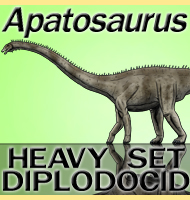 |
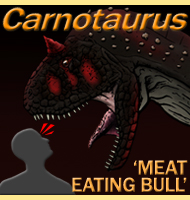 |
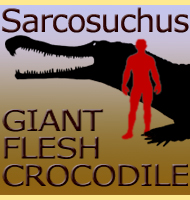 |
 |
